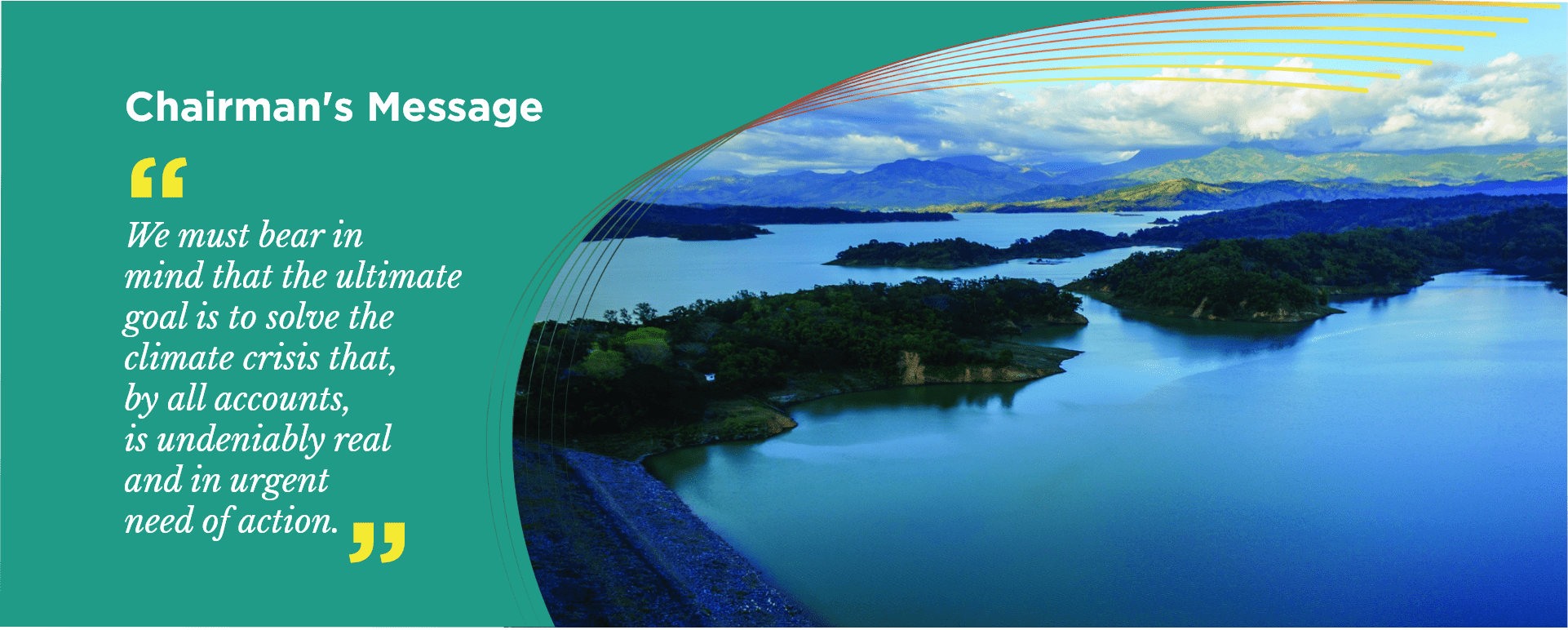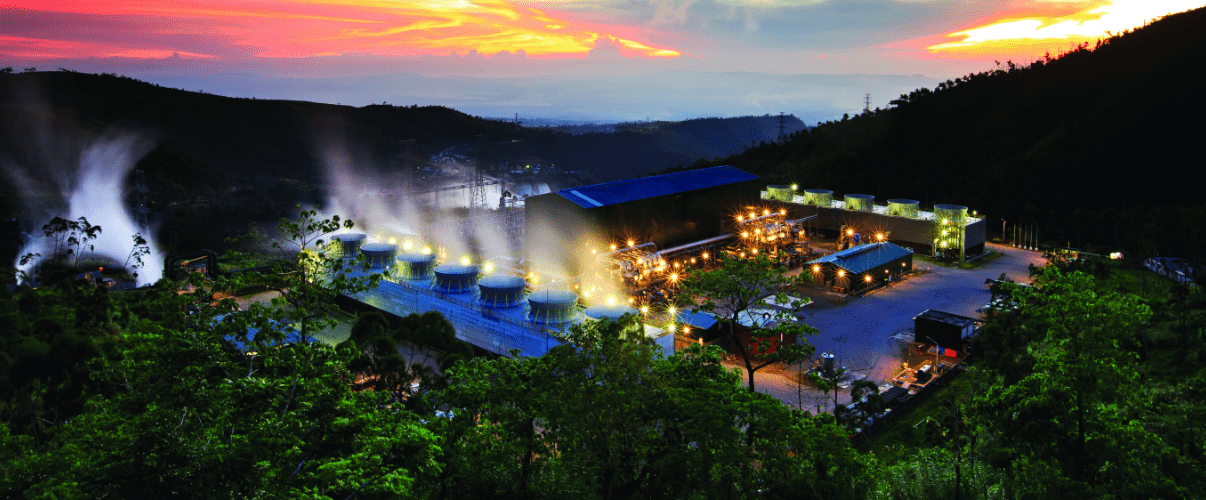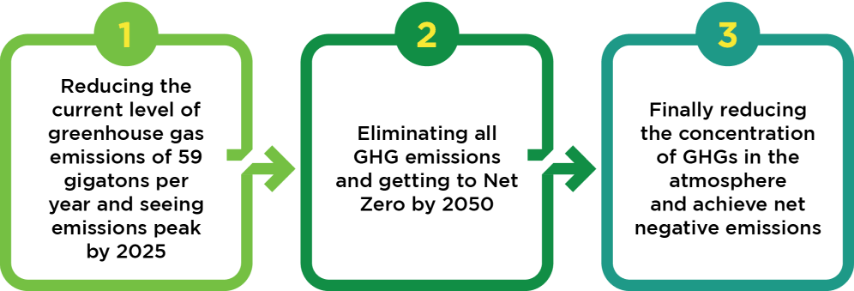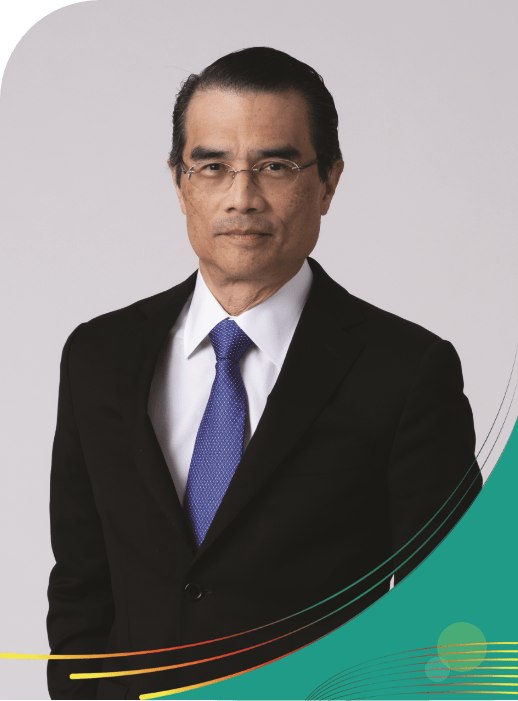
2023 was a harsh year for our planet. It was the hottest year on historical record by a substantial margin of +0.15°C over the previous high set in 2016; and it’ s most likely the hottest year in the last 100,000 years. It’ s no exaggeration that every person from every corner of the world has experienced this past year the “ unprecedented fury” unleashed by all the extreme weather events that have been increasing and occurring more frequently, “ supercharged” by climate change.
- Scorching and prolonged heatwaves were felt across the continents, setting new temperature records in Southern Europe, North Africa and the Middle East and in countries like the US and China.
- Raging wildfires such as in Maui Island, Canada, and Greece were considered the worst and the largest experienced in these areas, burning down forests, properties, and even claiming lives.
- Powerful hurricanes, cyclones and typhoons swept across the various regions, causing devastating floods like Cyclone Freddy, which was one of the longest lasting cyclones that lasted for 34 days. Another storm, Daniel brought record rainfall in Libya that overwhelmed dams and caused deadly flooding as more than 4,000 people died and over 10,000 more went missing. Tropical cyclone Mocha hit Myanmar and affected some 800,000 people in the region. Typhoon Mawar lashed out in Guam and was the strongest storm to affect the island since 2002. It also affected the Philippines as Super Typhoon Betty with a peak intensity of 215kph.
- There were intense rainfall and extreme precipitation too, that caused flash floods in New York, Hong Kong and parts of Northern Europe.
The extremely high temperature also contributed to record breaking levels for ocean heat and acidification, sea level rise, Antarctic sea ice loss and glacier retreat. What scientists have been fearing and warning us on the devastating effects of climate change continue to unfold every single day now, highlighting our own vulnerabilities to the powerful wrath of nature. We are in the midst of a climate crisis that we ourselves have caused and the cost of further inaction can only be catastrophic. What’ s more, the 2023 Global Stocktake (GST) revealed that the world is not on track on limiting global warming to 1.5°C. The GST is a core component of the 2015 Paris Agreement that assesses each country’s progress on climate action and encourages them to augment their climate goals. The slow mitigation could have been compensated by adaptation to shield us from the worsening climate change impacts, but the UN Environmental Programme (UNEP) Adaptation Gap Report of 2023 noted the world is also underfinanced and underprepared from the climate hazards.
Amidst all these, how then can we secure the future of humanity?
Many scientists have expressed the urgency for more ambitious climate action. In the words of UN secretary general Antonio Guterres: “Leaders can’t kick the can any further. We’re out of road.” At the conclusion of COP28 in December 2023, negotiators from all over the world worked overtime to deliver a new plan to address the mounting crisis posed by human-induced climate change. Key was the agreement to “transition away from fossil fuels in energy systems ” as well as to support vulnerable nations most impacted by climate change through pledges to a loss and damage fund. There was also progress on the $100.0 Billion pledged by developed nations to finance climate mitigating and adaptation initiatives in developing countries. The Global Goal on Adaptation was also included to encourage “ accelerating the use of ecosystem-based adaptation and nature-based solutions.”
For the Philippines, we saw the systematic approach undertaken by our government from updating our National Greenhouse Gas (GHG) Inventory, to the crafting of the Philippine Climate Change Assessment Report 2018-2023 with the help of the Oscar M. Lopez Center, and the completion of the National Adaptation Plan focused on food security, water sufficiency, ecosystem and environmental stability and human security which are all for release in 2024. We await finalization of the implementation plan of our Nationally Determined Contribution (NDC) to complete the foundation to rally all sectors to climate action. Complementing the government blueprint are planned regulations to align the private sector to this course, borne out of recognition that businesses contribute largely to the national GHG footprint. We also anticipate the adoption by the Securities and Exchange Commission of the international sustainability and climate standards for disclosure based on the prescriptions of the International Financial Reporting Standards Board in June 2023. At the FPH Group, we’ve been actively speaking about the global Journey to Net Zero through its three phases namely:
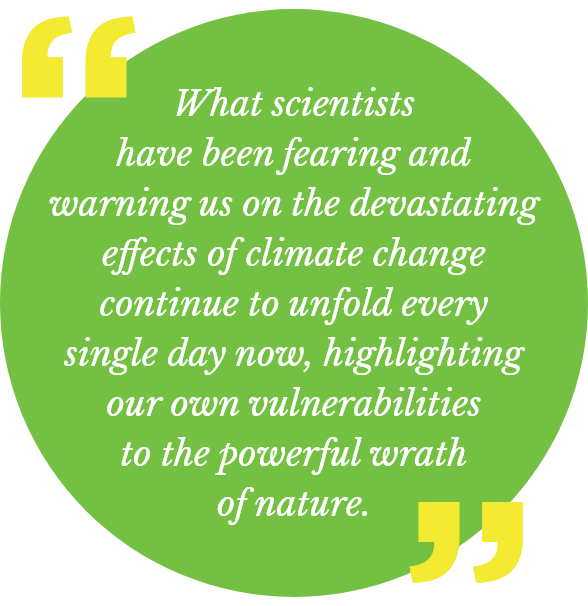
We must bear in mind that the ultimate goal is to solve the climate crisis that, by all accounts, is undeniably real and in urgent need of action. We have a narrowing time frame of the next 26 years to make our every action count and avoid irreversible damage to our planet.
Foremost is the need to decarbonize and scale up the greening of our electricity grid. This entails not only changing the electricity system but building a new global energy system with components we have never built before and at a massive scale. We believe this to be the greatest energy transition in the history of mankind.
Our diverse portfolio of clean and renewable energy sources allows us the best opportunity to shepherd our country’s energy transition to Net Zero. Aligned with the Philippine Energy Plan, we’ve set our target to grow our low carbon energy portfolio to 13,000MW by 2030, of which 9,000MW will be from renewable energy. We’ve lined up our expansion and growth projects utilizing our various fuels of geothermal and hydro and we are eyeing to expand our solar and wind power facilities through several service contracts in various sites all over the country that will be explored in the next few years.
Still, we recognize the importance to keep the lights on during this energy transition, more so with the imminent depletion of our Malampaya natural gas reserves. In 2023, we completed our LNG terminal facility situated at the First Gen Clean Energy Complex and ushered our floating storage and regasification vessel, the BW Batangas into the Batangas Bay. We’ve began importing LNG for testing and commissioning, and the LNG facility is ready to make up for any shortfall in Malampaya production and to continue to power our natural gas plants. This early though, we are looking at new technologies and alternative fuels to repower our natural gas plants, consistent with our own commitment to Net Zero by 2050. At Energy Development Corporation, we’ve embarked on a massive multi-year well-drilling operation to expand output for our various geothermal power plants to ensure a more steady and reliable supply from one of the few renewable energy sources capable of delivering power on a 24/7 basis. In May 2023, we won the bid for the 165-MW Casecnan hydro facility that, in combination with our Pantabangan-Masiway plants and our planned Project Aya pumped storage facility, gives us control over such a unique hydro asset complex. With the turnover of Casecnan in February 2024, we are now working to realize synergies in our hydro operations to supply the country’s growing demand for clean energy.
As we clean up our energy grid, we are also working to scale up energy efficiency as the “first fuel” and encourage its use everywhere. Today these efforts are still sparse and fragmented but have great potential to reduce carbon emissions and bring real cost savings and enhance the bottom lines of our customers. We’ve been developing our own arsenal of solutions such as rooftop solar, remote energy monitoring systems that allows consumers real-time monitoring of energy consumption, energy efficiency audits and solutions for commercial and industrial establishments, and distributed microgrids and resilient power solutions that can deliver reliable electricity all with the view to address the many pain points experienced by consumers.
We recognize though that it takes more than energy security and energy transition to stabilize the distressing state of the climate. While addressing the climate crisis feels such a daunting task, we remain optimistic and hopeful. Our FPH Mission “to forge collaborative pathways to a decarbonized and regenerative future ” continues to guide our path and we reaffirm our commitment to collaborate with our stakeholders, the government and the global community in the continuing fight to secure our future. Thank you for your continued and unwavering trust and support.


